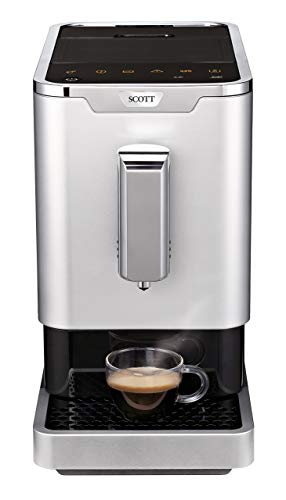Whole Bean Coffee Machine Beans
If your customers are concerned about their environmental impact they may be shocked to find out that whole bean coffee machines create a lot of waste in the form grounds.
Beans have a great flavour and can be kept for a long time in a dark, airtight container.
1. related resource site
When coffee beans are first harvested, they're green but they aren't suitable to brew your morning coffee until they've been cooked. Roasting is a complex chemical process that turns raw beans into the deliciously flavored, aromatic coffee we drink every day.

There are various roasts that determine the strength and flavor of brewed coffee. The different roast levels are determined by the length of time that beans are roasted and also influence how much caffeine is present in the resulting beverage.
Light roasts are cooked for most time. They are distinguished by their light brown color and lack of oil on the beans. About 350o to 400o the beans begin to steam due to internal water vapors releasing. Soon after you'll hear a booming sound, referred to as the first crack. The first crack is a sign that beans will soon be ready to brew.
During roasting, sugars caramelize and aromatic compounds begin to form. These volatile and nonvolatile compounds provide coffee with its distinctive flavor and aroma. It is essential not to roast the beans too long during this phase as they can lose their distinctive flavor or turn bitter. After roasting, the beans can be cool by water or air.
2. Water Temperature
The temperature of the water is a very important aspect to consider when making coffee. You can end up with bitter coffee when you use excessively hot water. If you make use of cold water, you will end up with weak, or sour, coffee. A good guideline is to use filtered or bottled water, should you need to, and then heat your equipment before brewing.
The hotter the water is, the quicker it can dissolve things like flavors and oils from the coffee grounds. The ideal temperature for brewing coffee is between 195 to 205 degrees Fahrenheit. This is just below the boiling point. This range is a popular choice amongst many coffee professionals from all over the world and it works across most brewing methods.
However the exact temperature for brewing isn't always exact because some of the heat is lost to evaporation during the brewing. This is especially true for manual methods, such as pour-over and French press. Furthermore, different brewing equipment could have different amounts of thermal mass and materials which could impact the final temperature.
In general generally, a higher brew temperature will result in a stronger cup coffee, but this isn't the case for all sensory attributes. Some research has shown that chocolate, bitter and roast flavors are more intense when made at higher temperatures. Other flavors, such as sour, also decrease with the increase in temperature.
3. Grind
The best beans, the most perfect roast and the freshest filtering water won't yield an outstanding cup if grind is not handled correctly. The size of the beans that are ground is a major factor determining the flavor and strength. This variable is important to control in order to experiment and to achieve consistency.
Grind size refers to the size of the particles of ground beans after they are crushed. Based on the coffee brewing method various grind sizes are ideal. For instance, coarsely ground beans will produce a weak cup of espresso while a finely ground grind will give you a cup that is bitter.
It is crucial to select the right coffee grinder with uniform grinding. This guarantees the highest level of consistency. The use of a burr grinder permits this and helps to ensure that the coffee grounds are of an equal size. Blade grinders are inconsistent and can result in uneven grounds.
If you want to get the most value of your espresso maker, consider buying a machine that has a built-in grinder and brewing unit. This will allow the beans to be brewed at their peak freshness and eliminate the need for ground coffee that has been pre-ground. The Melitta Bialetti Mypresso combines these features in a sleek and modern package. It comes with a variety of recipes and eight user profiles which can be customized and a smartphone application for complete control. It also has two hoppers and is compatible with ground as well as whole beans.
4. Brew Time
If the brew duration is too short, you will be able to extract less. If you make it too long, you could risk overextraction. This will cause bitter compounds to sever the sweetness of sugars and flavors, and leave a bitter, sour taste in your beverage.
If you brew your coffee too long, the sweet spot of optimal extraction will be lost. This leads to weak watery coffee that could be too acidic and unpleasant to drink. The amount of coffee grounds, the size of the grind and the brewing method will determine the optimal brewing time.
The best bean-tocup machines feature a grinder of high quality with adjustable settings. This allows you to test and find the best combination of brew duration and water temperature for your favorite coffees.
The brewing step consumes more energy than other parts of the coffee supply chain. Therefore, it is essential to know how to regulate the temperature of the brew to reduce waste and improve flavor. It is difficult to control the extraction with precision. This is due in part to the distribution of particles and the kinetics of dissolution and roasting and the character of the water, etc. This study determined TDS and PE to assess the impact of these parameters on the flavor characteristics of coffee. The TDS and PE values were not significant although there was a slight variation between the brews. This could be due in part to channelling.
